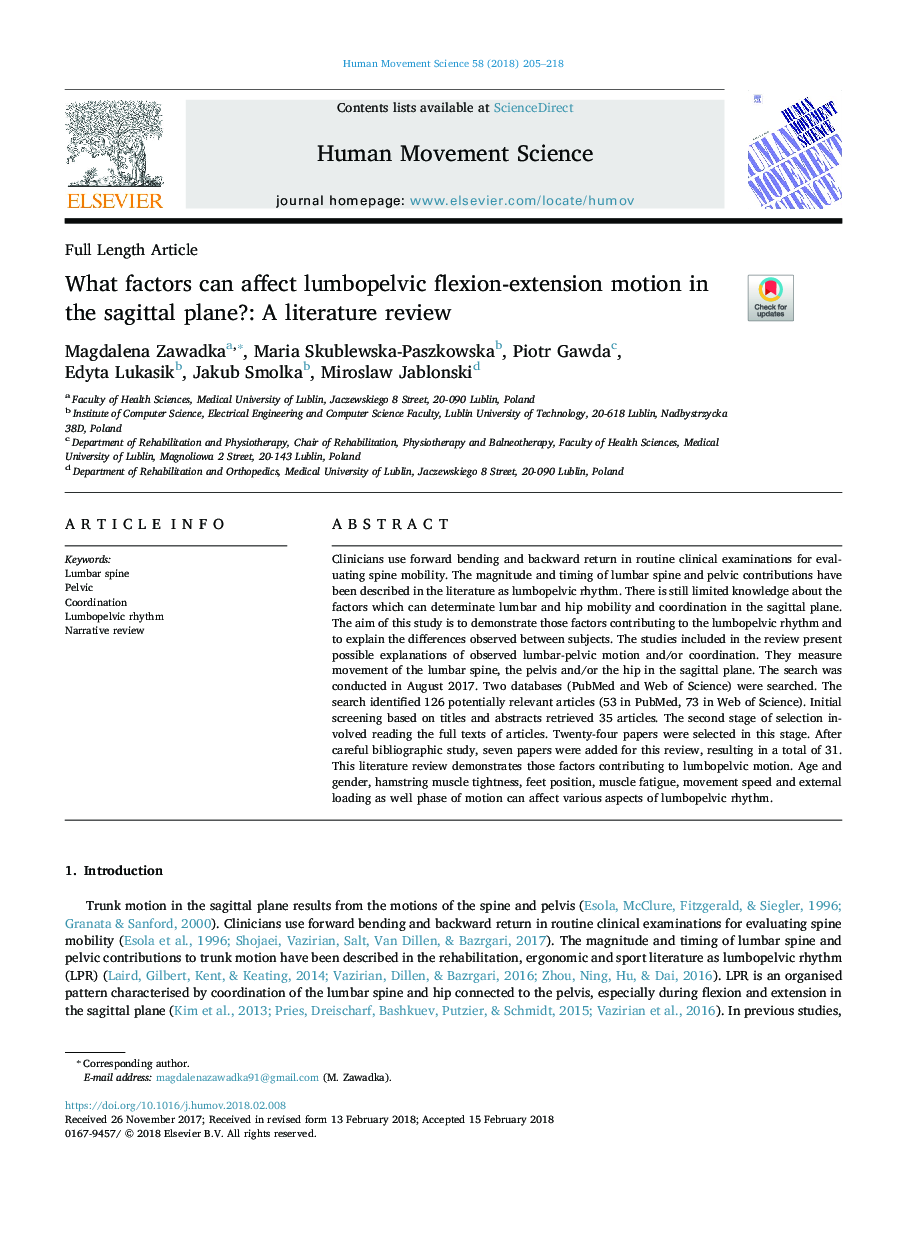| Article ID | Journal | Published Year | Pages | File Type |
|---|---|---|---|---|
| 7290938 | Human Movement Science | 2018 | 14 Pages |
Abstract
Clinicians use forward bending and backward return in routine clinical examinations for evaluating spine mobility. The magnitude and timing of lumbar spine and pelvic contributions have been described in the literature as lumbopelvic rhythm. There is still limited knowledge about the factors which can determinate lumbar and hip mobility and coordination in the sagittal plane. The aim of this study is to demonstrate those factors contributing to the lumbopelvic rhythm and to explain the differences observed between subjects. The studies included in the review present possible explanations of observed lumbar-pelvic motion and/or coordination. They measure movement of the lumbar spine, the pelvis and/or the hip in the sagittal plane. The search was conducted in August 2017. Two databases (PubMed and Web of Science) were searched. The search identified 126 potentially relevant articles (53 in PubMed, 73 in Web of Science). Initial screening based on titles and abstracts retrieved 35 articles. The second stage of selection involved reading the full texts of articles. Twenty-four papers were selected in this stage. After careful bibliographic study, seven papers were added for this review, resulting in a total of 31. This literature review demonstrates those factors contributing to lumbopelvic motion. Age and gender, hamstring muscle tightness, feet position, muscle fatigue, movement speed and external loading as well phase of motion can affect various aspects of lumbopelvic rhythm.
Related Topics
Life Sciences
Neuroscience
Cognitive Neuroscience
Authors
Magdalena Zawadka, Maria Skublewska-Paszkowska, Piotr Gawda, Edyta Lukasik, Jakub Smolka, Miroslaw Jablonski,
